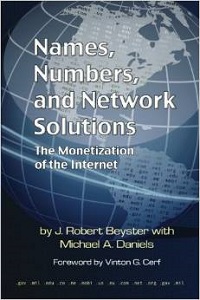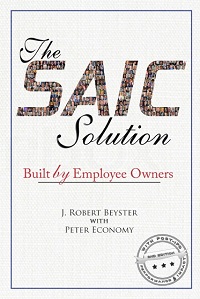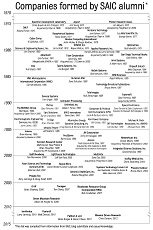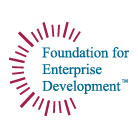The book is moving along well — we’ve passed the halfway mark. At this rate, we’ll be done before the end of the summer. This means that if you’ve been thinking about submitting a response to one of my previous postings, now is the time to do it. I have gotten some good ideas from many of your responses, and they will be helpful for the book. I suspect, however, that there are many other good ideas out there, and I’m looking forward to reading them soon. In future posts, I’ll keep working through the chapters, introducing key topics that I hope will spark further discussion and ideas for the book.
After the summer is over and the manuscript is complete, I plan to keep our dialog going. And as the book gets closer to publication in Spring 2007, I will ask you for your marketing and PR ideas.
Here are comments on some of your Week 6 and 7 responses:
Lloyd Mosemann: I suppose I would differ with you and call the Telcordia experience a success story in a sense. Although the cultures of SAIC and Telcordia differed, on most matters we could work out solutions to problems. For example, Telcordia usually made its “numbers” — its overall financial targets. My feeling though was that the Telcordia culture was so different, SAIC’s staff — including me — had a hard time working together.
Jordan Becker: I think a lot of what you said is true. We plan to incorporate some of your thoughts in the book.
Allen Herskowitz: Looks like this is a good and typical example of how senior people at SAIC worked together when their interests overlapped. The fact that both were employee owners amplified this effect.
Click on the comments link to share your thoughts.
- Bob





I remember when we centralized the Accounts Payable function and failed to have a parallel system running. We were very fortunate to still be in “business” when we had so many angry suppliers at our heels. I think we learned quite a bit from that little adventure. If I remember correctly, we also bagna installing a new accounting system – SAP. That was a very rough year.
Bob,
I have no doubt that EO played a role in enhancing our performance. As employee owners we had the right, but more importantly the responsibility, to make the company go. In my hiring experiences I always emphasized that EO’s really felt that they were empowered to fix things if they were broken. Because we had so much of our future tied up in the ocmpnay stock, we took that responsibility quite seriously.
We also learned to celebrate successes in other parts of the company and our fantastic record of adapting to rapidly changing marketplaces. When the DoD shifted substantially from sole-source to competitive procurements we all went to school to learn the new trade, and rapidly became the industry win-rate leader. When alternative energy work came, we became true experts in an amazingly short time. And when it went away we all worked to fill the gap and absorb some really good people. The company financials hardly blinked. These are examples of true motivation the EO’s feel.
It is fair to ask two questions: (1) Can people feel this sense of empowerment without EO? The answer is yes, but only with spectacular leadership that is difficult to maintain over time, especially in the face of bottom-line short-term investors. Cheerleading only works for so long. (2) Does EO guarantee these successes? Certainly not. It lays the groudwork for sustained success if the initial owners are willing to take the risk with their investment and share the power. There are many alledged employee-owned companies where only the stock is shared, not the responsibility. Those who take the risk and empower the EO’s will succeed.
Thanks for taking the risk,
Chuck Spofford
Bob, apologies for lack of comm. We’ve been working on the 2nd recompete (yes, going for 20 years!) of the original NASA Langley Research Center Atmospheric Sciences contract that launched SAIC as a major player in NASA back in 1991.
I tagged with Peter today and at least got started on how SAIC hooked up with NASA. Of course many of the comments on your blog apply to starting and continuing that relationship.
One that I haven’t seen was SAIC’s willingness to try new cost structures. I believe the “invention†of Company 6 in the early 90’s played a MAJOR role in our success with the civilian agencies like NASA, NOAA and DOI.
That leads me to an SAIC attribute I haven’t seen discussed much: the management, business developers and indirect staff interacted regularly, as opposed to the classic seperation found in most major companies between those functions. When I needed a change in a cost structure, O/H pool or fringe package to be competitive, I was able to interact directly with the indirect Corporate staff (like Peter Pavlics or Bernie Thule) and always got consideration of the issue and usually got the change needed, assuming it met GAAP and federal procurement law and process. Without that, our success in several markets where we now enjoy a significant position would never have happened.
One other characteristic about our company. There was never an attempt to force conformity in a one-size-fits-all sense between the various elements of the company. We had a terrific mix of comonnality when it made sense, but allowed a great deal of “variance†to occur when it didn’t. I fear that the new SOX environment, among other things, is dramatically altering that philosophy.
The last thing (at least for now) I’d like to say is the communication among us via the Meetings Week concept. When I first came to SAIC, I reacted to that forum and process as an expensive perk that mostly was just a big social swirl. Nothing could be farther from the truth. It was definitely part of the glue that kept this very decentralized structure from self-destructing. Management Council also made us all stop and look at where we’d been and where we were going and provided a chance to recognize (and chastise… nothing worse than having the biggest lost competition for the quarter ) individuals from all levels of the company.
Neil
Bob:
I can’t wait to read the book and get your perspective. No one else could ever tell the story better and even for us, we want to know, how did you do it? When I first interviewed with SAIC in 1993, I thought 3 years and I would have had enough, but 12.5 years later, I wondered where the time had gone. I am certain you will hear this from many employees, as the Company always challenged them with meaningful and important tasks and rewarded them accordingly and through employee ownership.
I absolutely agree with Rizzi’s definition of “ownership†and that’s exactly how it was perceived. I used that philosophy to recruit the most ambitious candidates, who could see the potential in succeeding in such environment. Every one of us took pride in what we did and how we presented the Company and how the Company represented us and touched our lives.
Best wishes for another successful endeavor.
Regards,
Abdul
Dr. Beyster,
Like the others that have responded, I am really glad to hear that you are doing well, looking so fit, and that you have decided to write your book!
You have been an inspiration to a lot of people (me included) over the years, but many of those people have never had the privilege of personal discussions with you, so I think your book will provide everyone with a much better understanding of the brilliance behind your leadership. I also believe that business leaders in any industry will benefit tremendously from reading your insights about the “secret sauce†that made SAIC such a great company. I personally think that your confidence in peoples’ abilities and dedication was the main ingredient in that sauce.
If you have a place in the book, I would be interested in reading your thoughts on why SAIC was not as successful in pursuing commercial business markets as we have been in our Government markets. Part of that discussion, and maybe even the reason for our less than exceptional performance, might be why we seemed to be unable to successfully join Government and commercial business areas in one company. As you know, I thoroughly enjoyed the challenge of trying to do just that but for whatever reason(s) was not as successful as you and others would have liked.
I look forward to reading more and contributing where I think I can.
Steve
Dr. Beyster,
I am delighted to hear that you are writing a book about SAIC. I am also astounded that you’re half finished; my own book took seven years!
I look back on my eight years at SAI (1973 to 1981) with great fondness. SAI’s pervasive entrepreneurial spirit allowed us to move from ICBMs to ocean energy without management or corporate structural interference.
Yes, employee ownership was important, but probably not most important. Encouragement, recognition of achievement and freedom to pursue interests were.
Sincerely,
Duane Hove
El Segundo Office
Badge #1084
Dear Dr. Beyster,
responding to your data call (week 6) on critical events, along your
time line (week 13), I should like to learn more about your initial ideas
during the late 1960s. The critical event for me was initiating the start.
One reason: Benchmarking the progress made in action since 1969,
reflecting on your “sauce”, then, compared to other folks’
guesses and the theoretical concepts in the late 1960s.
Reason two: I’m in a start-up situations today, and need dimensions
of the initial state 2006 and the potential paths 2006 +
I need to get rid of the wrong guesses foating around.
Background: In 1967-68 I moved fom Stanford to UC Berkeley. There,
as a post-doctoral at the Center for Research in Management Science,
I shared an office with Gary Becker, the Human Resource Economist and Nobel Laureate.
That is how I got interested in EO as a driver of superior performance.
On my thirtieth birthday, November 12, 1967, I invented the “Concoy
Model” of concerted action, and formulated the Synchrony Theorem on
co-workers getting into sync to outperform the market (G. Mensch, On Integer Complementarity, Working Paper No. 245, CRMS, UC Berkeley, February 1968).
And then I forgot the whole thing, taking-off into another whole new direction, innovation theory and empirical innovations research.
Whereas you, Sir, started-up SAIC, implemented and improved upon
your blend of those basic ideas, thus making a priceless experience.
Out of my Innovations Research and Innovation Theory has developed a
new set of IT-Tools, and the “Innovation Data Farming Approach”, based on the Convoy Model and on concepts how to get supporters in sync.
These IT-Tools, applied in small scale, could be commercialized, now.
“Innovation Data Farming” calls for a network system. I need to find a suitable EO Scheme. I need to learn from you and your co-leaders.
Yours sincerely, with best regards Gerhard Mensch
Dear Dr. Beyster,
I am so pleased that you are capturing the SAIC experience in writing. Your values and methods touched so many people and produced a thriving business model that should be an example to management classes and generations to come. When one realises the damage that greedy bankers and such have caused to people and businesses in latter years, it is good to be able to remember the values and approach that you instigated in SAIC. I will always remember my five years with SAIC and hope one day to be able to emulate and instigate the same values and approach in another employee ownership situation.
Best wishes
Robert Wall
Robert: Thanks for your blog posting. I would like to add to your list of greedy people the real estate people who along with the bankers contributed so much to the destruction of the housing market. I don’t think we’ve even begun to recover from the mischief they caused. — Bob